#31: Use a Distinctive Setting for Major Plot Turns
Many of the scenes in Jane Austen’s novels occur in what, for her characters, would be ordinary settings—drawing rooms and walks where they had been many times before. We’ll talk, in a few weeks, about how to use familiar settings.
But sometimes Austen uses very distinctive settings for her scenes, and this often happens when there is a major plot turn in the story.
A major plot turn is when both the story and the characters undergo a large shift. Something happens which irrevocably changes the future direction of the plot, and has a profound impact on character and relationship arcs.
In her novel Persuasion, Jane Austen gives her characters a distinctive setting, unlike the rest in the book, when a number of the characters take a trip to the town of Lyme Regis.
A modern view of Lyme Regis by Alison Day (limited Creative Commons license)
Three of the characters who travel to Lyme Regis are our main character, Anne Elliot, the man she turned down years before, Captain Wentworth, and his current love interest, Louisa Musgrove.
I previously talked about the Anne-Wentworth-Louisa trio in a post about making things hard for your character. In sum, when Anne and Captain Wentworth became engaged, Anne was persuaded by family members and friends to break off the engagement. Wentworth still has not forgiven her for this. One of the things Wentworth values about Louisa is that she is not easily persuadable—she will go her own way.
Fast forward to Lyme Regis. Bringing the characters to this new, distinctive setting first allows them to meet or encounter new characters who will be key to the story, including Captain Benwick and Anne’s cousin, Mr. Elliot.
Distinctive settings are unfamiliar to characters, which heightens the awareness of the setting for both the characters and the reader. When in a distinctive setting, the characters have a whole additional layer of things to navigate: new physical objects, new or unfamiliar expectations, and as a result…
Distinctive settings often draw out peoples strengths and weaknesses, demonstrate who they really are, and provide opportunities for characters to transform in either a positive or a negative direction.
At Lyme Regis, a number of the characters take a walk along the Cobb, which is a wall near the harbor. There is a heightened awareness of the setting, which is distinctive enough to bring to Anne’s mind the poetry of Byron as she walks with Captain Benwick:
Lord Byron’s ‘dark blue seas’ could not fail of being brought forward by their present view, and she gladly gave him all her attention as long as attention was possible.
In the following paragraph, which is one of the biggest, most dramatic events in Persuasion, we see how the setting draws out Louisa’s firmness of character and the way she is unyielding to persuasion. While Captain Wentworth has always seen this characteristic as a virtue, the negative side of it is made clear.
There was too much wind to make the high part of the new Cobb pleasant for the ladies, and they agreed to get down the steps to the lower, and all were contented to pass quietly and carefully down the steep flight, excepting Louisa; she must be jumped down them by Captain Wentworth. In all their walks, he had had to jump her from the stiles; the sensation was delightful to her. The hardness of the pavement for her feet, made him less willing upon the present occasion; he did it, however; she was safely down, and instantly, to shew her enjoyment, ran up the steps to be jumped down again. He advised her against it, thought the jar too great; but no, he reasoned and talked in vain; she smiled and said, ‘I am determined I will:’ he put out his hands; she was too precipitate by half a second, she fell on the pavement on the Lower Cobb, and was taken up lifeless!
A picture of steps on the Cobb, which is one of the sets of steps that Austen may have been describing in the novel. Image by Chris Talbot, Creative Commons license.
Almost all of the characters completely panic and are rather useless in this sort of situation. Except for Anne. Here we see her kindness, her perceptiveness, her rationality, and her ability to act in the face of challenge.
“Go to him, go to him,” cried Anne, “for heaven’s sake go to him….Rub her hands, rub her temples; here are salts,–take them, take them.”
Captain Benwick obeyed, and Charles at the same moment, disengaging himself from his wife, they were both with him; and Louisa was raised up and supported more firmly between them, and every thing was done that Anne had prompted, but in vain; while Captain Wentworth, staggering against the wall for his support, exclaimed in the bitterest agony,
“Oh God! her father and mother!”
“A surgeon!” said Anne.
He caught the word; it seemed to rouse him at once, and saying only, “True, true, a surgeon this instant,” was darting away, when Anne eagerly suggested,
“Captain Benwick, would not I be better for Captain Benwick? He knows where a surgeon is to be found.”
Every one capable of thinking felt the advantage of the idea[.]
Jane Austen uses a number of techniques in this passage to create emotional intensity. After Louisa’s fall, descriptions of the setting and people and people’s behavior are very short and concise. Her use of punctuation changes, paragraphs not ending with full stops before leaping into the next paragraph. And short snippets of dialogue are stacked on each other with almost no interruption.
A distinctive setting, like the Cobb at Lyme Regis, seems a fitting backdrop for such a pivotal event that impacts the entire trajectory of the novel.
Making an Ordinary Setting Distinctive
Sometimes distinctive settings are big and new and grand and different. Yet at other times, Jane Austen takes an ordinary setting and makes it distinctive in some way, and then uses this ordinary yet distinctive setting for a major plot turn.
An example of this is Mr. Elton’s proposal to Emma, in the book Emma. This proposal is key, not just because it is a proposal which she rejects, but because it is the start of Emma’s awareness that her judgment can be faulty (she thought Mr. Elton was in love with her friend Harriet, but he is actually in love with her).
The proposal occurs in a carriage, a very ordinary setting for an Austen character, yet what makes it distinctive is that Emma and Mr. Elton were never meant to be in a carriage alone together, and they only are because of a mix-up caused by other characters.
It is not common for a man and a woman to be in a carriage by themselves. This suddenly distinctive setting puts these two characters alone and unsupervised, when they would not normally be so. Mr. Elton decides to seize this opportunity to propose. The setting also serves to trap the characters: they are stuck in a moving box together, which adds to the pressure. During the proposal Emma feels trapped, and then after he is denied, Mr. Elton is also trapped both literally and figuratively.
A distinctive setting—whether it is grand and full of danger like the Cobb, or a familiar setting made distinctive like Emma’s carriage—is a powerful place to set a major plot turn, as it can make the plot possible, heighten awareness and tension, and draw out characters’ strengths and weaknesses.
Exercise 1: Choose a key scene from a story you have written, and revise the scene either by:
- Editing the setting to make it more distinctive (which will impact your description as well as how your character interact with and within the setting).
- Rewriting the scene with a new setting that can do more to assist with this major plot point.
Exercise 2:
Choose a book or a film, and find a scene with a distinctive setting in terms of landscape, architecture, cultural/historical significance, etc.
How does the use of this setting impact the plot and the character? What strengths and weaknesses of the characters does it manifest? How does this setting fit within the context of the other settings used in the story?
Exercise 3:
Consider the following list of ordinary places. Add a description to each to show how you could make them distinctive, in a way that might open up storytelling possibilities. (This could be anything, for example, something happening within the place, who is inside, how this place differs from other places like it, etc.)
- A grocery store
- A school bus
- A bar
- A movie theater
- A kitchen

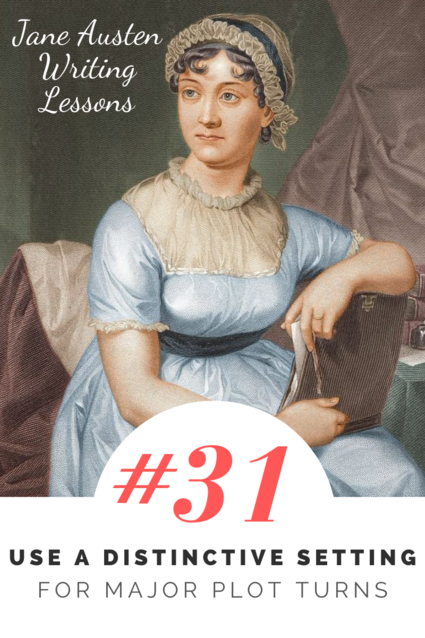
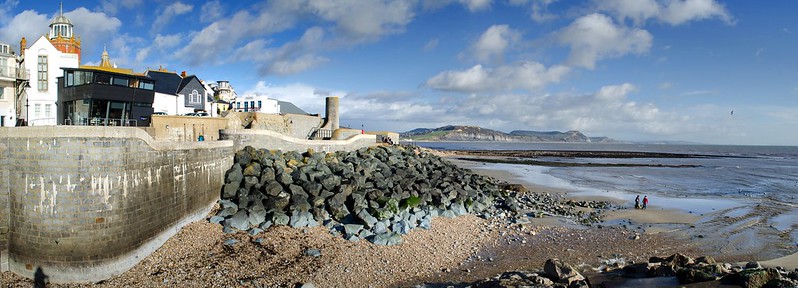
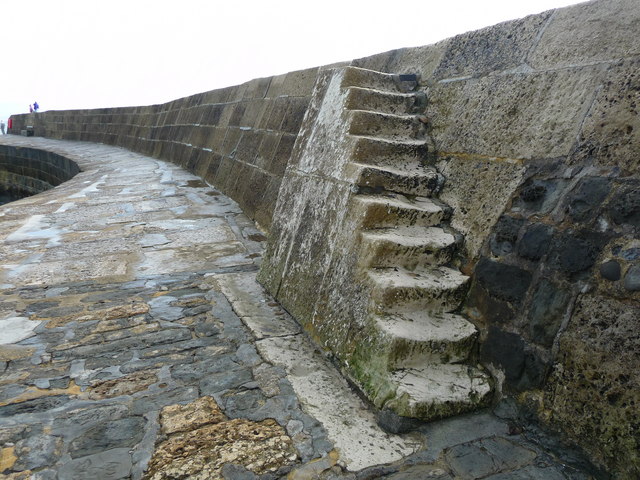

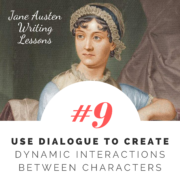
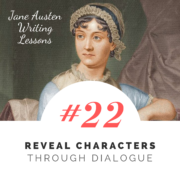
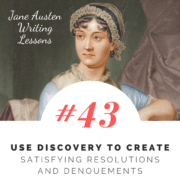
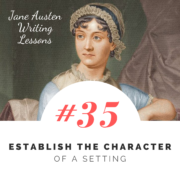
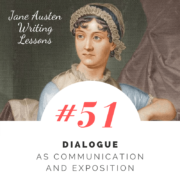
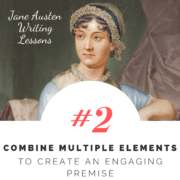


Leave a Reply
Want to join the discussion?Feel free to contribute!